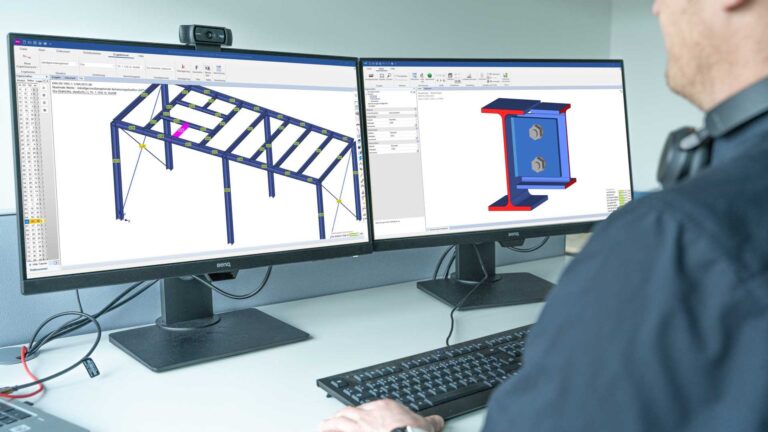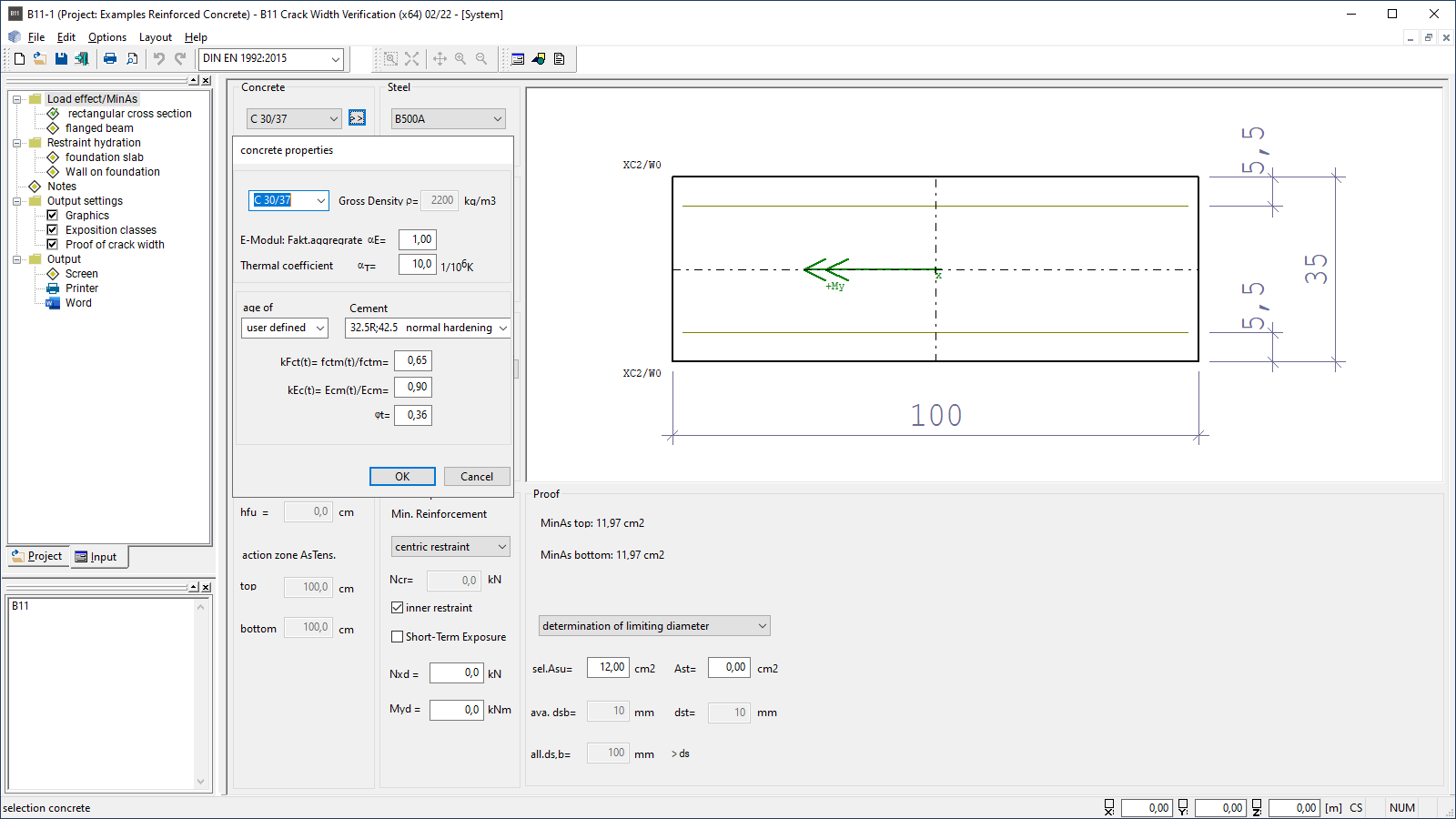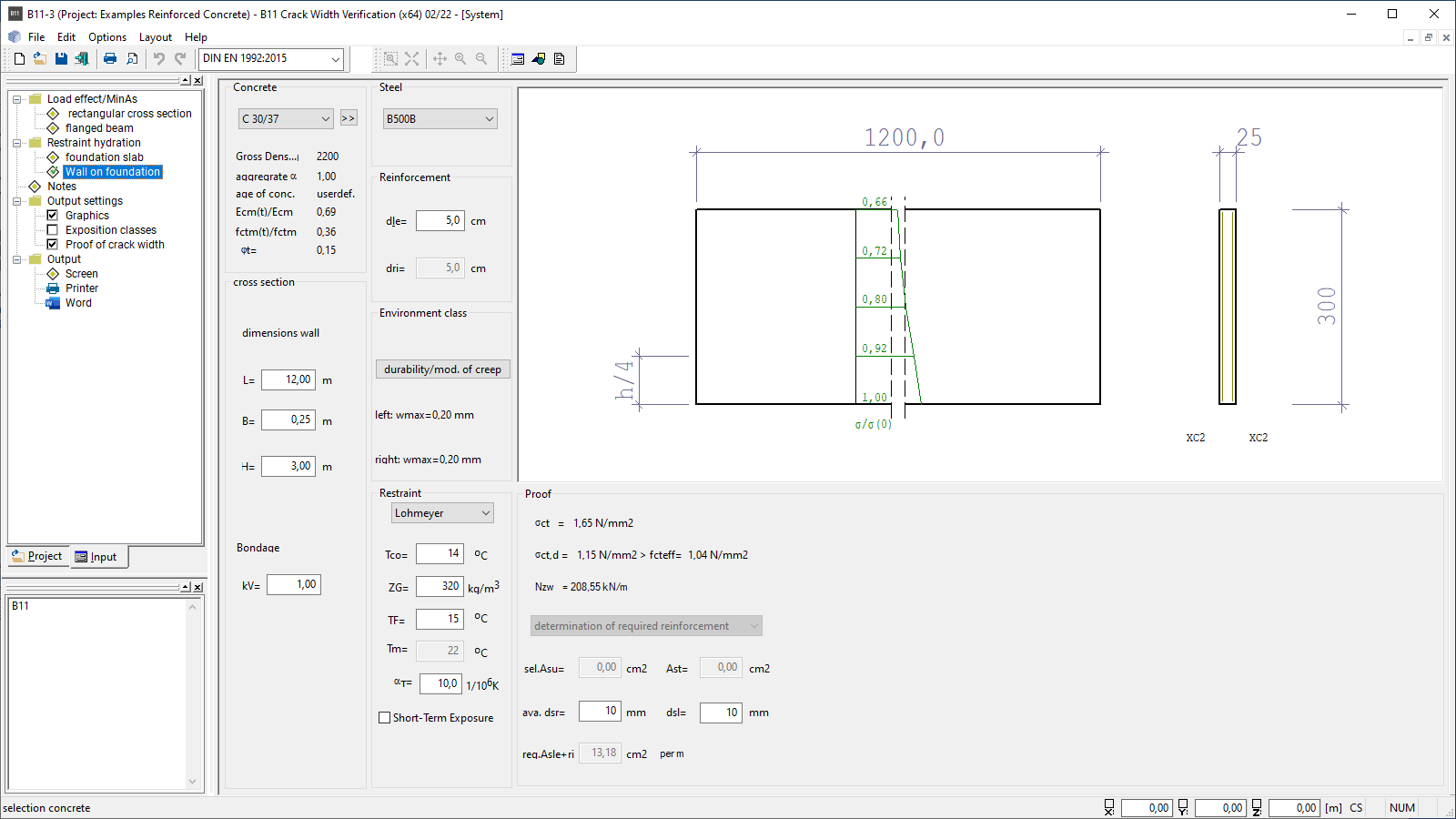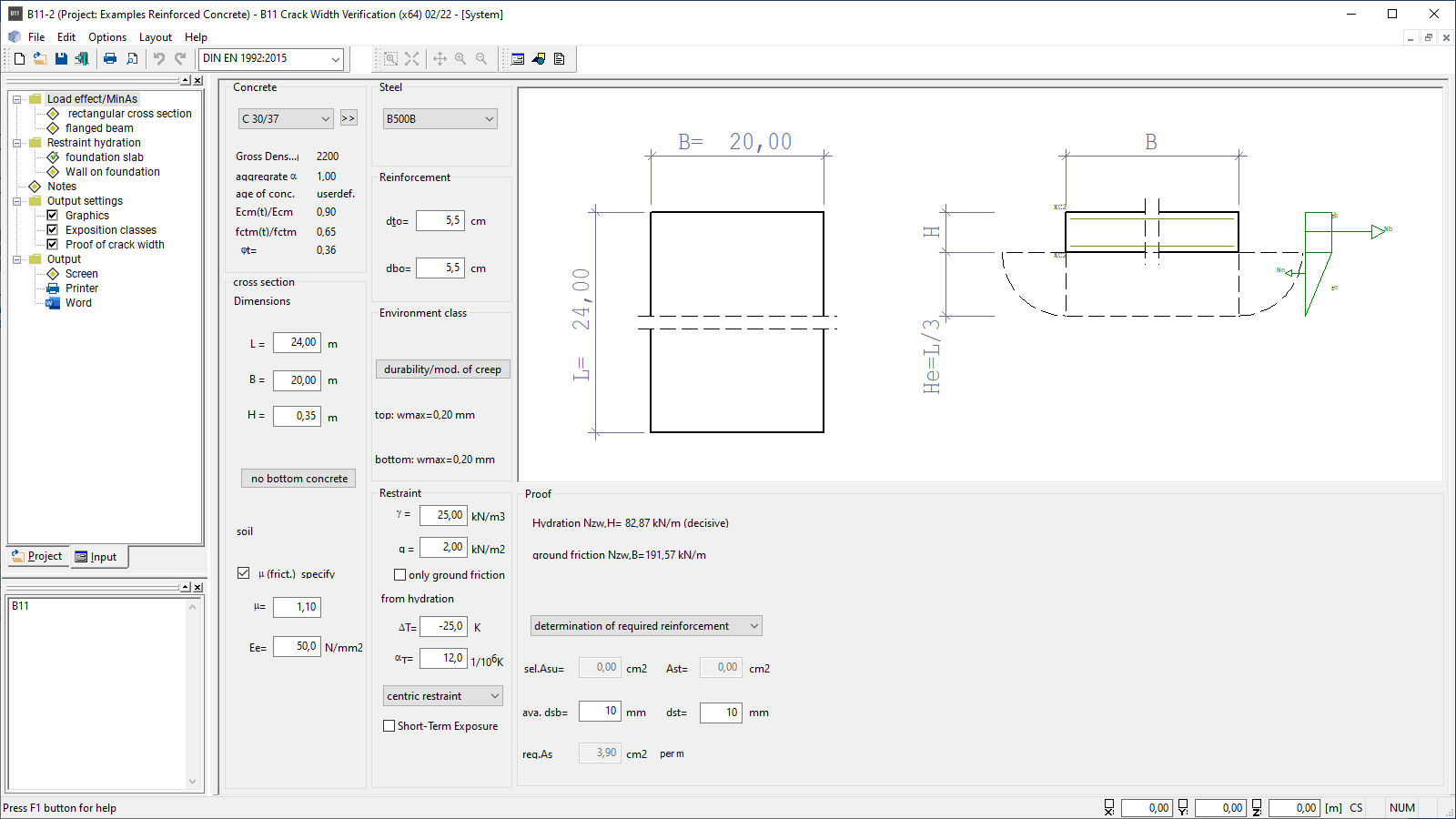
Crack Width Verification
B11
The B11 program can be used to verify the limitation of the crack width under load effects (normal force and moment) for rectangular and T-beam cross-sections. In addition, the minimum reinforcement for early and late restraint can be determined with consideration of the required permissible crack widths. The Base Plate and Wall on Foundation modules provide for the calculation of the required reinforcement for reactive forces produced by hydration with consideration of the linear expansion.
Discover now more programs from the section Reinforced Concrete!
SHOW MOREMaterial
- Concrete of the strength classes C12/15 to C100/115
- Lightweight concrete of the strength classes LC 12/13 to LC 80/88
- Reinforcing steel of the steel grades B500A, B500B and BSt 420 S(A) in combination with the German NA (corresponding qualities for all other available NAs)
Structural system
- Rectangular cross-section – min As and load effects
- T-beam – min As and load effects
- Base plate – restraint due to hydration or soil friction
- Wall on foundation – restraint due to hydration
- Detailed entry of the exposure classes and the resulting durability requirements (minimum concrete class, concrete cover and permissible crack width)
- In the enhanced concrete dialog, the concrete age, the thermal expansion coefficient and a coefficient for the determination of the modulus of elasticity can be entered.
Serviceability
The crack width verification under load effects is based on the crack formula in equation 7.8. In this analysis, the required reinforcement to comply with the permissible crack width, the limit diameter or the crack width can be determined.
The calculation of the minimum reinforcement is based on the crack formula (eq.) 7.8, the required reinforcement to comply with the permissible crack width is determined with consideration of internal crack forces as per with 7.3.2.
The calculation of the reactive forces in the Base Plate module is based on Booklet 466 of the German Committee for Reinforced Concrete DafStb and takes the involvement of the subsoil into account. The upper limit value is the soil friction.
The required reinforcement for reactive forces due to hydration of walls on top of previously cast foundations is calculated according to Lohmeyer, Ebeling “Weiße Wannen einfach und sicher ermittelt”.
Document file formats
- Word
- Printer
Output
- The user can define the desired scope of data to be put out via the options of the output profile.
- The cross-section, the reinforcement, and the state of strain of the selected verification can be represented in the graphic view.
Import options
- Frilo ASCII
Export options
- Frilo ASCII
- XML file
Reinforced concrete
- DIN EN 1992
- ÖNORM EN 1992
- BS EN 1992
- PN EN 1992
- NEN EN 1992
- NBN EN 1992
- CSN EN 1992
- EN 1992
- DIN 1045-1
Support resources
News

FRILO launches version 2024-2 with powerful updates for structural analysis and design
Highlights include the optimised design of Schöck Isokörbe®, the advanced integration of DC foundation engineering programs into the FRILO environment and new RSX interfaces for detail verifications in steel construction.

Load determination for eight-floor perimeter block development with FRILO Building Model
Find out how the structural engineers at bauart Konstruktions GmbH determined the loads for an eight-floor perimeter block development in Frankfurt’s Europaviertel district using the GEO from FRILO.




